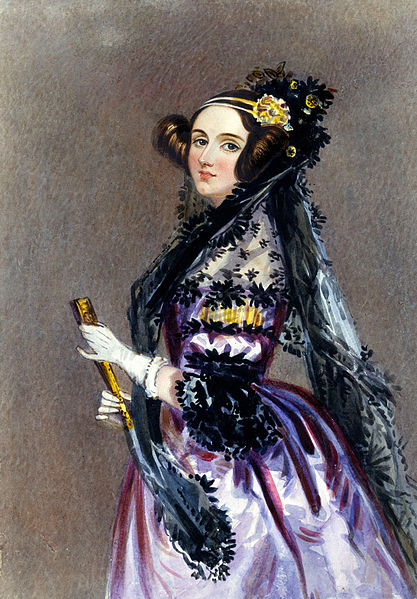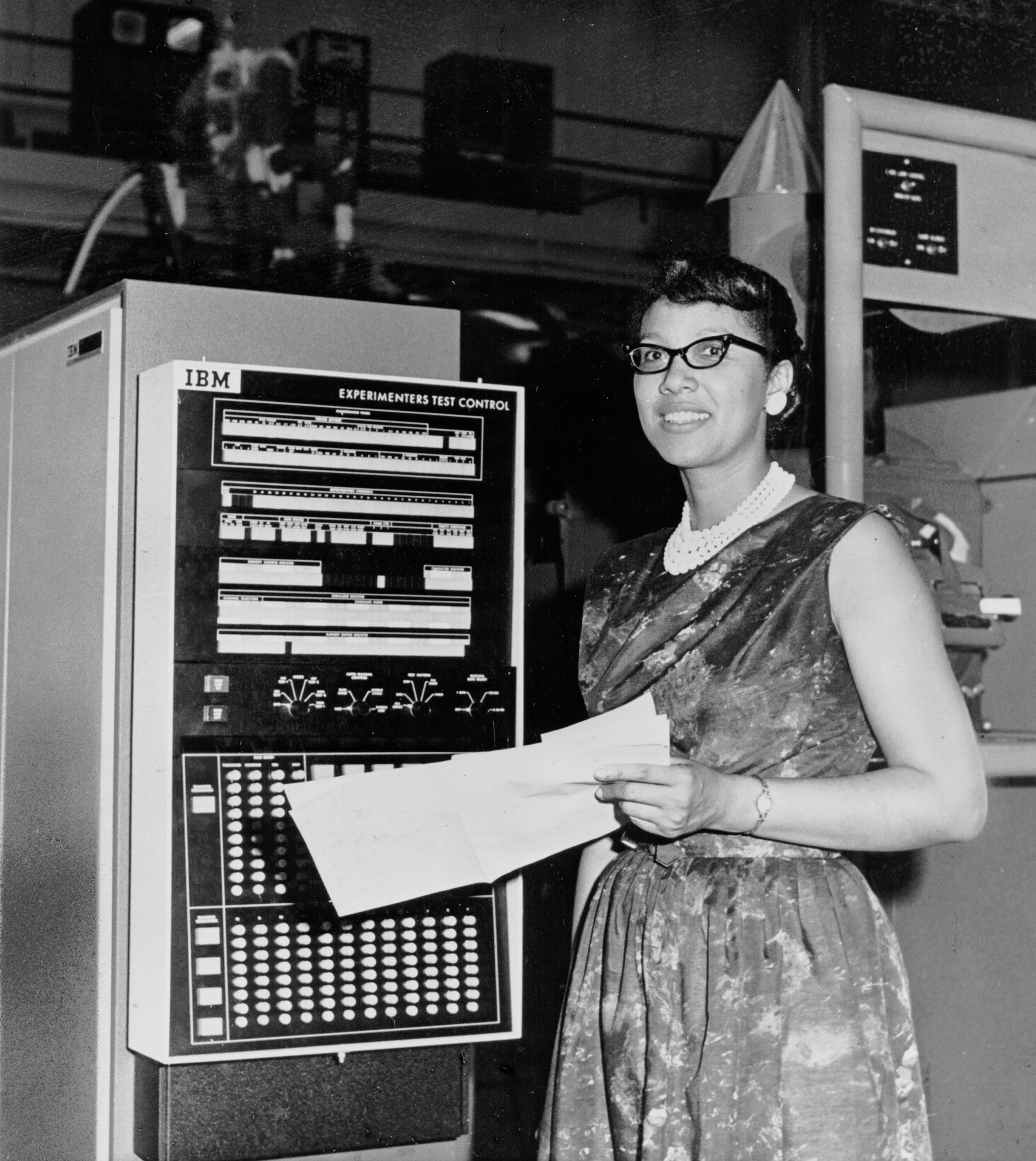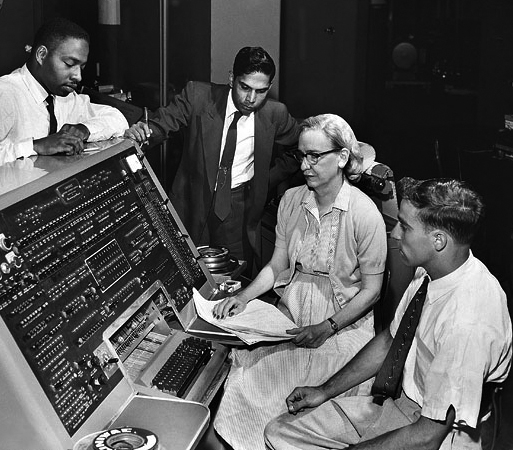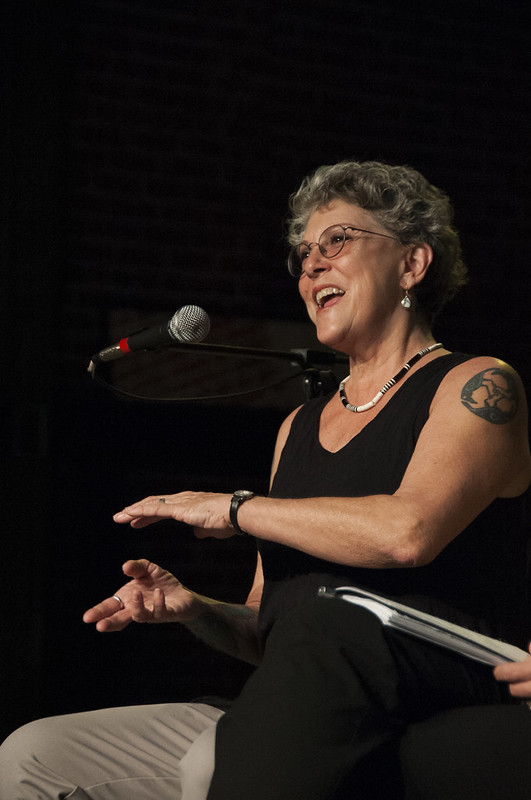Why this work matters
The history of computing and interaction design is full of tales of the lone genius white male and occasionally gives a nod to the same handful of women we see in history book after history book. This collection looks to challenge the status-quo with stories about early interaction and information pioneers—the women of all colors who were trailblazers in male dominated areas, who created new practices and methods; the women who started programs in universities; who founded journals, magazines and professional organizations to celebrate our practices; the women who ran departments in the tech companies and became founders of agencies and Vice Presidents and CXOs or startup founders.
My goal is to highlight many people you may not have heard about before, as well as familiar names, but mostly it’s about women breaking ground, leading the way, leading teams, founding disciplines, starting magazines, creating professional organizations to cultivate community, and creating new programs in universities. These women are innovating the design processes and techniques of our craft, they are teaching to codify common practices, starting companies, and creating opportunities for others to come into a mature well-defined profession.
Without women, the field of interaction design would not be as rich as we find it today. While the stories we learn are usually about the men—the myth of the lone genius is strong—WORK was and still is being done by women behind the scenes. Team collaborations and research done by women is mostly unsung and often forgotten. Design done by women often times goes uncredited—we tend not to seek the spotlight as collaborators, and we like to share credit with our teams.
This collection focuses on the applied practice of women across interaction design—& ux design—and the subdisciplines that have evolved out of this practice including interaction design, information architecture, content strategy & governance, user research, information visualization and visual interface design.
Why this book? Why now?
The impetus for this book came out of my preparation for an Interaction Design History survey course I was teaching in the Fall of 2020. I approached the class from the perspective of the lineage of IXD—all the other disciplines that feed into our discipline (human factors, industrial design, graphic design, psychology, computer science, graphic design, animation, game design, anthropology, architecture) cherry picking people and key innovations from these disciplines that have been fully integrated into our interaction design processes.
As part of the class, I wanted to highlight women who have made contributions to the field through their work or teaching and I also challenged my students to write biographies of women and people of color in the field. For the biographies, I didn’t limit my students to only write about people who made significant contributions who may already have a lot written about them. But to be open to hearing about people who might be overlooked, under appreciated or newer to the field—including emerging stars.
Coming out of the class, it has become clear to me that there is no single place that collects the stories of the many women who have created and moved this discipline forward—from the very beginnings of computing, human factors, hypertext, design—to the expansion into digital practices involving information architecture, content strategy and governance, systems thinking, data visualization, visual UI design and straight interaction design.
The histories of computing barely mentions women and if they do, they generally mention the same handful—Ada Lovelace, Grace Hopper, Susan Kare, Brenda Laurel. The history of the early web and its evolution into complex interactive software is mostly skipped and much of the information is disappearing as sites disappear and memories fade. A recent comprehensive history on the digital Web world covering the last 30 years only lists 6 women. To look at this book, one would think that there were no women in the field of web design or designing interactive experiences delivered via the internet. None of the books I reviewed talk about women of color or interaction designers from outside the United States. These missing stories are the stories we should also be hearing about.
To start, I have begun compiling lists of women to include and am finding my path littered with questions. Who do I include? Where should the edges be? How far back do I go? Do I include women in computing who were programmers but not interaction designers? Do I include Information Architects from Library Science backgrounds? What about graphic designers who shifted? That’s my own personal journey. What about writers and content strategists? Does data visualization fall into our history? Or is it its own separate discipline—and what about interactive data? Do I include game designers? Interaction design was happening in arcade games and console game long before interaction design came to the computer.
It gets complicated.
See the very long, incomplete, list of women in interaction design.
See a timeline—across multiple disciplines—of important events, innovations, contributions, and synergies—I highlight women in their various fields but include all people. This is a continuous work in progress.

Watercolor portrait of Ada King, Countess of Lovelace (Ada Lovelace) circa 1840. Science Museum Group
Do I tell the story, again, of Ada Lovelace and how she was the child of Byron and was a brilliant mathematician (depending on who you ask) who encountered Babbage and struck up a lifelong friendship with him and eventually wrote computer programs for a machine that was never built? A lot has been written about her in recent years—articles, biographies, memorial days and conferences celebrating her work—all memorializing her thinking and prescience related to computer programming.
To read more about Ada Lovelace, check out the following books:

Melba Roy heads the group of NASA mathematicians, known as "computers," who track the Echo satellites. Roy's computations help produce the orbital element timetables by which millions can view the satellite from Earth as it passes overhead. She went on to become Program Production Section Chief at Goddard Space Flight Center. January 1964. Great Images in NASA

Grace Murray Hopper at the UNIVAC keyboard, c. 1960. Grace Brewster Murray: American mathematician and rear admiral in the U.S. Navy who was a pioneer in developing computer technology, helping to devise UNIVAC I. the first commercial electronic computer, and naval applications for COBOL (common-business-oriented language). Flickr: Grace Hopper and UNIVAC (creative commons)
Do I jump forward and tell the stories of the women, including many women of color, who were computers themselves in the early days during WW2 and afterwards, for the military and for NASA, doing all the computing for telemetry of ballistics and then rockets and finally for the manned astronaut missions?
Do I talk about Grace Hopper, who was one of those women writing programs for the first computers as part of the war effort, who later, seeing how computer code was incomprehensible and not standardized for the various manufacturers, took on the task to lead the efforts to reconfigure the languages to be easily understood and readable by people—the result being the computer language COBOL? Isn’t that user centered? Again, a lot has been written about Grace Hopper, but not about the team of women she worked with at UNIVAC, who were erased for years by the histories written by white men.
To read more about Grace Hopper, check out the following books:
- Broad Band: The Untold Story of the Women Who Made the Internet by Claire L. Evans
- Grace Hopper and the Invention of the Information Age by Kurt W. Beyer
- Grace Hopper: Admiral of the Cyber Sea by Kathleen Broome Williams
To read more about the women computers check out the following:
- The Women of EINAC - http://eg.bucknell.edu/~csci203/2018-fall/wp2018fall/wp-content/uploads/2016/08/womenOfENIAC.pdf
- Women and the Public Face of Computing - https://computerhistory.org/blog/women-and-the-public-face-of-computing/
- To learn about the Black women who worked as computers read the book or watch the movie Hidden Figures - https://www.imdb.com/title/tt4846340/
Do I start with Brenda Laurel, someone who I idolize for her tenacity, drive and breadth of career, who studied theater and began working at Atari on games and then came into Apple’s Human Interface group and then on to Interval Research where she was able to dive into researching gender and technology and games for several years and eventually launch her own game company for girls? Do I talk about how she paved the way for thinking about how girls play differently than boys or how ultimately the company failed because their success in a niche market wasn’t enough to keep it from being shut down (that pesky need to serve capitalism). Do I also mention that she has been an educator of a generation of designers over the years in southern and northern California and that she helped start the MFA Design program at California College of the Arts and is currently on the board of the Interaction Design Association?
Learn more about Brenda Laurel here:
- Brenda Laurel: Pioneering Games for Girls by Carly A. Kocurek
- Broad Band: The Untold Story of the Women Who Made the Internet by Claire L. Evans
- Women Design: Pioneers in architecture, industrial, graphic and digital design from the twentieth century to the present day by Libby Sellers
I could deep dive into all these amazing women and fill up the entire book with their stories, but I won’t.

Brenda Laurel
Looking Back at "Girl Games": A Keynote Conversation @ IndieCade photo from flickr (creative commons license)
Over the last several years, every book on Computing History, Women in Design, Women in Computing, all go into great detail telling the stories of these few trailblazers. biographies and chapters in books, videos and podcasts all celebrate these women. I urge you to dig into some of the resources I have listed to learn more about each of these women and their contributions to our field. Because there are so many good writings about these women, if you aren’t careful, you might think that these are the only women who worked in their respective parts of this field.
To counter this perception, I am going to focus on the people you may not have heard about before, the other women breaking ground, leading the way, leading teams, founding disciplines, starting magazines, creating professional organizations to cultivate community and creating new programs in universities, innovating processes and techniques of our craft, teaching to codify a common practice, starting companies and paving the way for others to come into a mature well-defined profession.
How can you help?
Thanks to all the people who have sent me names of women working in the practice. Over the last two years I have looked into every one of them. I have lists and lists, which you can see on The Stories page. My hope, over time, is to tell short stories for every single person on the website. Not everyone is included in the book (it's impossible) so I have trended to women working earlier in the field from a history standpoint. But even that was difficult as some people have been impossible to find, others didn't respond to requests for interview, or still others are just busy and have work to do without being pestered by me for their stories. Soon there will be a form to add your story—keep checking back.
I have created a Go Fund Me to raise money for editing the Deep Cuts - about 2 dozen profiles - and to help hire an intern or two to revamp this site so that it can be the go-to place for Women Interaction Design History knowledge.
